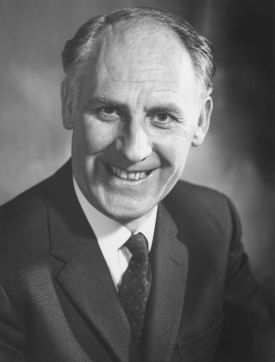Raymond Hide facts for kids
Quick facts for kids
Raymond Hide
|
|
|---|---|
 |
|
| Born | 17 May 1929 |
| Died | 6 September 2016 (aged 87) |
| Nationality | British |
| Citizenship | British |
| Alma mater | University of Manchester |
| Scientific career | |
| Fields | Physics |
| Institutions | Jesus College, Oxford, Imperial College, London |
Raymond Hide was a British scientist who studied physics. He was a professor at the University of Oxford and a senior researcher at Imperial College London. He was known for his important work on how fluids move, especially in planets.
Early Life and Education
Raymond Hide was born on May 17, 1929. He went to school in South Yorkshire, England. He then studied physics at the University of Manchester, where he earned a top degree in 1950. Later, he continued his studies at Gonville and Caius College, Cambridge and received his doctorate in 1953.
A Career in Science
After finishing his studies, Raymond Hide worked at several important places. He did research at the University of Chicago in the United States. From 1954 to 1957, he was a senior research fellow at the Atomic Energy Research Establishment in Harwell, England.
He taught physics at King's College, Newcastle, from 1957 to 1961. Then, he became a professor at the Massachusetts Institute of Technology (MIT) in the US, where he worked from 1961 to 1967.
From 1967 to 1990, he led the Geophysical Fluid Dynamics Lab at the Met Office. This is the UK's national weather service. He also became a fellow at Jesus College, Oxford in 1983. From 1984 to 1990, he was a professor of astronomy at Gresham College in London.
What He Studied
Raymond Hide's research covered many areas of science. He studied Geophysics, which is about the Earth's physical processes. This included:
- Geomagnetism: The Earth's magnetic field.
- Meteorology: The study of weather and atmosphere.
- Geodesy: Measuring the Earth's shape and gravity.
- Oceanography: The study of oceans.
He also worked on Planetary physics, which looks at how planets work. A big part of his work was on geophysical fluid mechanics. This field studies how liquids and gases move on Earth and other planets. He also looked at magnetohydrodynamics (MHD), which is about how electrically conducting fluids interact with magnetic fields.
His studies on spinning fluids helped us understand how atmospheres and oceans move. It also explained how the inside of planets behaves.
Awards and Recognition
Raymond Hide received many awards for his important scientific work:
- In 1964, he became a fellow of the American Academy of Arts and Sciences.
- In 1971, he was elected a Fellow of the Royal Society, a very high honor for scientists in the UK.
- He won the Chree medal and prize in 1975.
- He received the Fernand Holweck Medal and Prize in 1982.
- In 1989, he was awarded the Gold Medal of the Royal Astronomical Society for his work in geophysics.
- The Royal Society gave him the Hughes Medal in 1998.
- In 2002, he received the Symons Gold Medal from the Royal Meteorological Society.
In 1990, he was made a Commander of the Order of the British Empire (CBE). He also served as the president of the Royal Meteorological Society from 1974 to 1976. In 1996, Pope John Paul II appointed him a member of the Pontifical Academy of Sciences.
Raymond Hide passed away on September 6, 2016, at the age of 87.

